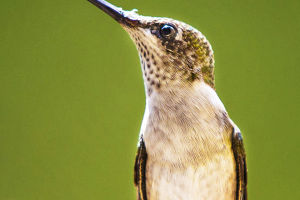Foxes are fascinating creatures that are found all around the world. When we think of foxes, the image of a red fox often comes to mind, as it is the most common species of fox. However, many other species of foxes are just as interesting and unique.
One of the distinguishing features of foxes is their oval, glowing pupils that can adapt to darkness, similar to those of a cat. This sets them apart from other canids with round pupils. Foxes also have a keen sense of sight, smell, and hearing, which makes them excellent hunters.
Most foxes have a pungent smell that is emitted by odor glands located at the base of their tail. They typically live in forests, grasslands, semi-deserts, and hilly areas, making their homes in tree holes or earthen caves. They venture out at night to hunt for various kinds of prey, including rats, rabbits, birds, fish, frogs, lizards, insects, and wild fruits.
Despite their reputation for being predators, foxes can be beneficial to humans. They mainly eat mice and only occasionally attack poultry, making them an animal with more benefits than harm. When they pounce on their prey, their long, dense tail helps them keep their balance, and the white hair at the tip of their tail can confuse the enemy and disrupt their vision.
However, the image of the fox in stories is often different from their actual behavior. Foxes are intelligent and adaptable animals that can be found in many different environments. One example is the crab-eating fox, which has short and thick fur ranging from grayish-brown to yellow to dark gray.
They have black markings on their hind feet and back, and their muzzle, ears, and paws are redder in color. Their body is narrow, and their feet are short and strong. The tail has dense hair that stands up when excited, and the ears are broad and round. Crab-eating foxes have a total of 42 teeth and are omnivorous, eating meat and vegetables.
Another interesting species of fox is the cross fox, which is similar in size to the red fox. Cross foxes have black limbs and bellies, and brown heads, shoulders, and back. The front shoulders and back of the cross fox also have a black cross pattern, making them unique.
There are many mutant species of cross foxes because they are hybrids. Cross foxes are hybrids of red and white foxes and red, silver or shadow foxes, and the chances of getting a cross fox when mating are 50%.
The South African fox is another beautiful and agile species of fox. They have an ochre yellow coat that is woolly and fuzzy, and they are often considered one of the most beautiful families among the beasts. Domesticated South African foxes are known to be sociable and often curl up in a ball and sleep on the same couch as their human companions.
The marbled fox is another unique species of fox that has a white coat but marbled hair on the edges of the ears, forehead, eyes, backbone, and tail in black, brown, or pearl colors. The silver and black fox, also known as the silver fox, is native to North America and Siberia.
It is a mutation of the wild state fox and is slightly larger than the blue fox. The silver fox has a black-brown muzzle, back of both ears and limbs, and can come in all white, all black, or white with a thousand black needles. It is typically 60-75 cm long and weighs 5-8 kg.
Finally, the colored fox is a variant of the silver and black fox, the red fox, and the blue fox that is bred under captive conditions.


